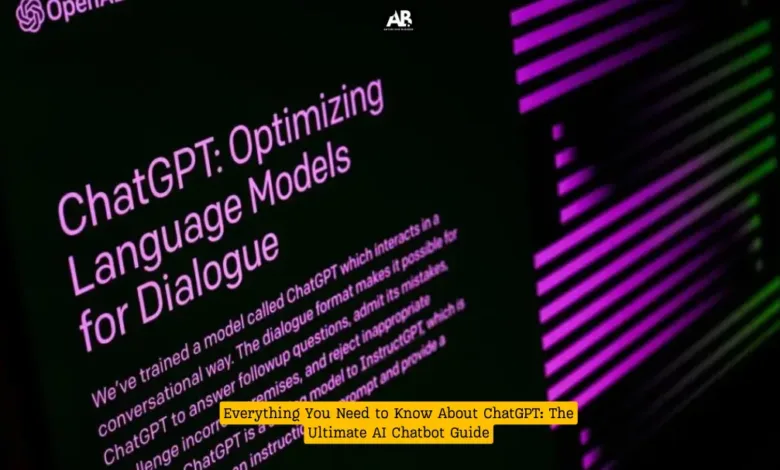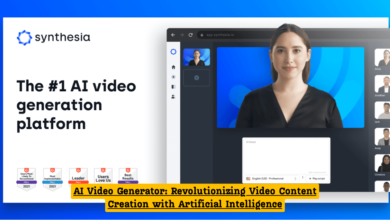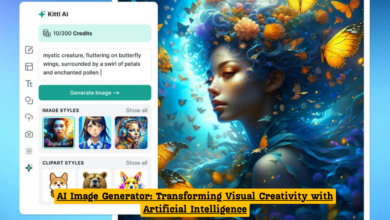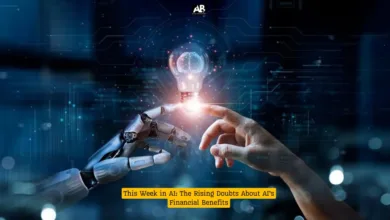Everything You Need to Know About ChatGPT: The Ultimate AI Chatbot Guide
In the rapidly evolving world of artificial intelligence, ChatGPT stands out as one of the most advanced and versatile AI chatbots available. Developed by OpenAI, ChatGPT has revolutionized how we interact with technology, offering a wide range of applications from customer support to creative writing. This guide provides everything you need to know about ChatGPT, from its core functionalities to its practical uses and future developments.

What is ChatGPT?
ChatGPT is an AI-powered chatbot developed by OpenAI, designed to understand and generate human-like text based on the input it receives. Built on the GPT (Generative Pre-trained Transformer) architecture, ChatGPT leverages deep learning techniques to produce coherent and contextually relevant responses.
1. Core Technology
At the heart of ChatGPT is the GPT architecture, which utilizes transformer models to process and generate text. The model is trained on vast amounts of text data, enabling it to understand language patterns, context, and nuances. This training allows ChatGPT to generate responses that are not only accurate but also contextually appropriate.
2. How It Works
ChatGPT works by taking a user’s input and generating a response based on its training data. The model uses attention mechanisms to focus on different parts of the input, ensuring that the generated response is relevant to the context. This process involves predicting the next word or phrase in a sequence, leading to coherent and human-like interactions.
Key Features of ChatGPT
ChatGPT offers several key features that make it a powerful tool for various applications:
1. Natural Language Understanding
One of ChatGPT’s standout features is its ability to understand and process natural language. It can interpret complex sentences, grasp the context, and generate responses that are contextually relevant, making it highly effective for conversational interactions.
2. Versatility
ChatGPT is versatile and can be used for a wide range of applications, including:
- Customer Support: Handling customer queries, providing information, and resolving issues in real-time.
- Content Creation: Assisting with writing articles, creating content, and generating creative ideas.
- Educational Assistance: Providing explanations, tutoring, and answering educational questions.
3. Continuous Learning
While ChatGPT’s core model is pre-trained, it can be fine-tuned and updated with new data to improve its performance and adapt to emerging trends. This continuous learning approach ensures that ChatGPT remains relevant and effective in a dynamic environment.
Applications of ChatGPT
ChatGPT’s versatility makes it suitable for a variety of applications:
1. Business and Customer Service
Businesses leverage ChatGPT to enhance customer service by providing instant support and handling routine inquiries. The chatbot’s ability to understand and respond to a wide range of questions makes it a valuable asset for improving customer interactions and reducing response times.
2. Content Generation
In the realm of content creation, ChatGPT assists writers and marketers by generating ideas, drafting content, and even creating entire articles. Its ability to produce high-quality text quickly makes it a useful tool for content creators looking to streamline their workflows.
3. Personal Use
On a personal level, ChatGPT can assist users with everyday tasks such as brainstorming ideas, learning new topics, or simply engaging in casual conversation. Its natural language capabilities make it a helpful companion for various personal and professional needs.
Advantages of ChatGPT
ChatGPT offers several advantages that contribute to its popularity and effectiveness:
1. Human-Like Interaction
ChatGPT’s ability to generate human-like responses creates a more engaging and natural interaction experience. This human-like quality enhances user satisfaction and improves the overall effectiveness of AI-driven communication.
2. Scalability
As a cloud-based solution, ChatGPT can easily scale to handle varying levels of demand. Whether used by a single individual or integrated into a large enterprise, the chatbot can accommodate diverse needs without compromising performance.
3. Cost-Effective Solution
For businesses, ChatGPT provides a cost-effective solution for automating customer support and content creation. By reducing the need for human intervention in routine tasks, companies can save on operational costs while maintaining high levels of service.
Challenges and Considerations
Despite its strengths, ChatGPT faces several challenges and considerations:
1. Data Privacy
As with any AI technology, data privacy is a concern. Users and organizations must ensure that sensitive information is handled appropriately and that ChatGPT interactions comply with privacy regulations.
2. Contextual Limitations
While ChatGPT excels at generating contextually relevant responses, it may occasionally struggle with highly specialized or nuanced topics. Ensuring the chatbot’s responses are accurate and reliable requires ongoing fine-tuning and validation.
3. Ethical Use
The ethical use of AI technologies like ChatGPT is a critical consideration. Ensuring that the chatbot is used responsibly and does not contribute to misinformation or harmful activities is essential for maintaining trust and integrity.
The Future of ChatGPT
Looking ahead, ChatGPT is expected to continue evolving with advancements in AI technology. Future developments may include improved contextual understanding, enhanced customization options, and expanded applications across various industries.
1. Enhanced Personalization
Future versions of ChatGPT may offer more personalized interactions, tailoring responses based on individual user preferences and historical interactions.
2. Broader Integration
ChatGPT is likely to be integrated into a wider range of applications and platforms, further extending its utility and accessibility.
3. Continued Learning
As AI technology advances, ChatGPT will benefit from ongoing improvements in natural language processing and machine learning, leading to even more sophisticated and effective interactions.





